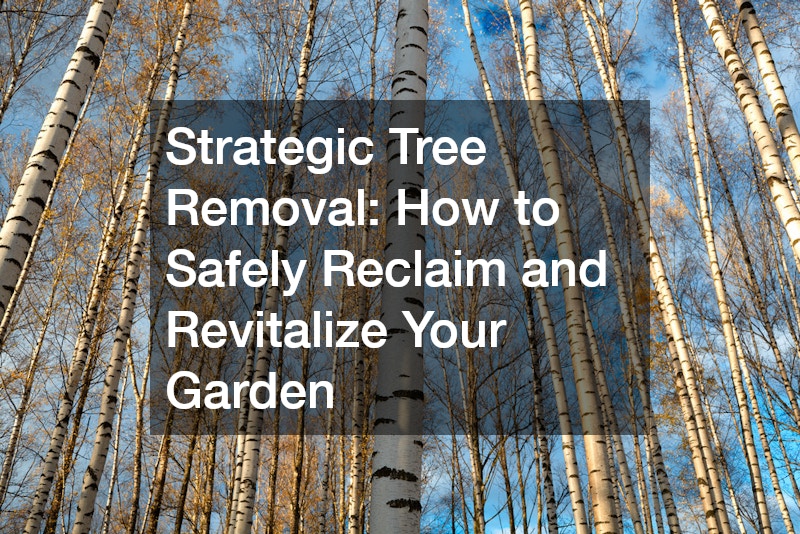In this article, we will explore the essential aspects of strategic tree removal, including safety protocols, revitalization techniques, and best practices for garden recovery.
1. What Are the Signs That a Tree Needs to Be Removed?
Identifying when a tree is beyond saving is crucial for maintaining your garden’s health. Common indicators include visible signs of decay, which may manifest as peeling bark, brittle branches, and fungal growth.
Other indicators can be trees that lean dangerously or show extensive deadwood, suggesting significant structural issues that may pose a threat to nearby structures and individuals.
Pest infestation can also signal that a tree might need removal. Infestations from pests like bark beetles or termites compromise the integrity of the tree, making it prone to falling. Monitoring for symptoms such as sawdust, holes in the trunk, or the presence of pests is crucial. Additionally, trees affected by diseases such as oak wilt or root rot can become hazardous over time.
Environmental factors like proximity to power lines or buildings should also be considered. Trees that have outgrown their space can interfere with utilities, leading to dangerous situations during storms. Regularly inspecting trees for these signs and responding promptly can help ensure a safe and appealing garden environment.
2. How Can I Safely Remove a Tree From My Garden?
When it comes to tree removal, safety should always be the top priority. Depending on the size and location of the tree, you may consider using basic tools such as a chainsaw for smaller projects or hiring professionals for larger, more dangerous trees. Protective gear, including helmets, gloves, and safety goggles, is essential for any tree removal task.
For DIY enthusiasts, learning proper cutting techniques and understanding the direction of the fall can prevent accidents. Marking the fall zone and removing nearby obstacles beforehand is also crucial. In many cases, renting equipment like a stump grinder can help you manage the remnants of the tree more effectively.
Hiring a professional tree removal service often provides benefits such as experience and specialized equipment. Certified arborists can assess the situation, reduce the risks involved, and ensure that the job is done efficiently. Whether choosing to tackle the project yourself or enlisting the help of professionals, prioritize safety above all else to minimize risks associated with tree removal.
3. What Should I Consider Before Removing a Tree?
Before proceeding with tree removal, it’s vital to consider legal regulations that might affect your decision. Many municipalities have strict codes regarding tree removal, especially for protected or historic trees. Researching local ordinances can avoid potential fines and ensure compliance with the law.
Ecologically, trees play a fundamental role in maintaining a balanced ecosystem. Removal can lead to soil erosion and loss of habitat for wildlife. Assessing the environmental impact of your decision is crucial, particularly in urban areas where tree canopies contribute to air quality and cooling temperatures.
Aesthetically, the tree in question may hold sentimental value or contribute to the overall beauty of your garden. Having a plan for landscaping after removal can help mitigate the emotional loss or visual void created. Careful planning and consideration of these factors will lead to informed decision-making regarding your garden’s design and management.
4. How Can I Revitalize My Garden After Tree Removal?
After a tree has been removed, the next step is to rejuvenate the surrounding area. Soil restoration is vital and can be achieved by adding organic material, such as compost, to enrich the soil’s nutrient content. Testing the soil for pH and nutrient levels can provide insights into what specific amendments are necessary for optimal plant growth post-removal.
Once the soil is prepared, consider planting new flora that complements your garden’s existing landscape. Native plants are often a great choice, as they adapt well to the local environment and support local wildlife. Incorporating diverse plant species can create a balanced and vibrant garden that thrives after tree removal.
Landscaping ideas can enhance the aesthetic appeal of your garden post-removal. Creating new flower beds or introducing structures like trellises or decorative stones can transform the space. Integrating hardscaping elements such as pathways or outdoor seating can also provide a functional aspect to the revitalized area, making it inviting for family and friends.
In conclusion, strategic tree removal can pave the way for a healthier and more vibrant garden. By following best practices, individuals can safely reclaim their outdoor spaces while ensuring long-term sustainability. Incorporating well-planned revitalization techniques into your garden management strategy will help establish a flourishing environment for future enjoyment.

